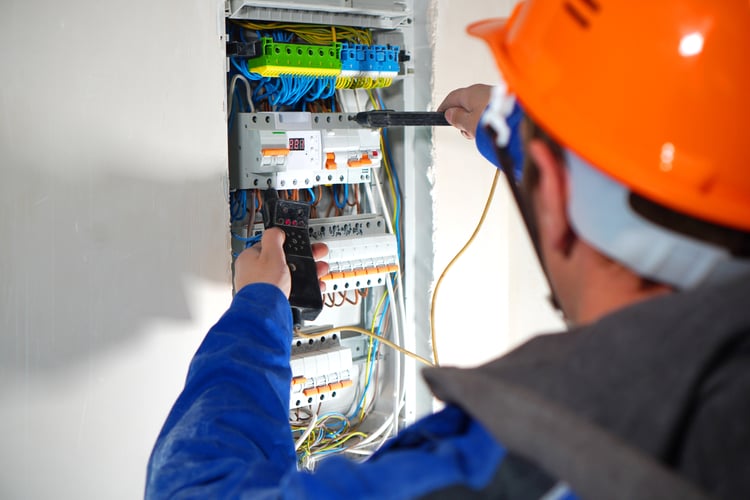Debunking Electrical Setup: Understanding Codes and Regulations for a Lawful and Safe Arrangement
In the realm of electric installation, adherence to codes and guidelines is paramount to make sure both validity and security. The trip to demystifying electrical installment goes beyond simple knowledge with policies; it demands a profound grasp of just how to execute secure electric practices successfully.
Relevance of Electrical Codes
The adherence to electric codes is essential in guaranteeing the safety and integrity of electric installments. Electric codes function as a set of standards and guidelines that dictate the correct design, installation, and maintenance of electrical systems. These codes are developed to decrease the threat of electrical hazards, fires, and other security worries that might emerge from faulty electrical work.

In addition, electrical codes are regularly upgraded to incorporate brand-new technologies, ideal practices, and precaution. Remaining updated with these codes is essential for experts in the electric market to make certain that their work fulfills the most recent safety and security standards. Inevitably, the importance of electric codes hinges on producing a safe and secure and efficient electrical framework that benefits both individuals and areas.
Key Laws for Safety And Security
Several essential laws govern the security criteria in electrical setups. One crucial law is the National Electrical Code (NEC), which supplies standards for safe electrical style, installment, and inspection to safeguard individuals and building from electrical risks. The NEC covers elements such as circuitry approaches, grounding, overcurrent protection, and equipment setup to make sure a secure electric system.
An additional crucial policy is the Occupational Security and Health And Wellness Management (OSHA) criteria, which concentrate on the safety and security of employees entailed in electric installments (BRE Electrical). OSHA policies include requirements for proper training, safety procedures, and personal safety tools to avoid office accidents and injuries
In Addition, the International Electrotechnical Payment (IEC) requirements aim to harmonize electric setup policies on a global range. These criteria address problems like electrical tools safety and security, electro-magnetic compatibility, and energy performance to advertise uniformity and safety and security in electric setups worldwide.
Compliance with these vital guidelines is vital to ensure the safety and security and legitimacy of electrical installments, securing both individuals and building from the dangers connected with electricity.
Recognizing National Electric Code
Secret regulations such as the National Electric Code (NEC) offer essential standards for secure electrical layout, setup, and inspection to make sure the protection of people and residential or commercial property from electric risks. The NEC, additionally referred to as NFPA 70, is a comprehensive set of criteria for electrical setups that are upgraded every three years. It is developed by the National Fire Security Organization (NFPA) and is widely embraced throughout the USA.
The NEC covers various elements of electric job, including electrical wiring approaches, grounding, overcurrent defense, and equipment setup. It intends to guard individuals and home by attending to possible risks related to electrical systems. Compliance why not look here with the NEC is normally applied by local authorities having jurisdiction (AHJs), such as building code officials and examiners.
Comprehending the NEC is vital for electric contractors, designers, and inspectors to guarantee that setups satisfy the required security demands. By sticking to the NEC guidelines, experts can assist stop electric crashes and make sure the dependability of electric systems in household, business, and commercial setups.

Compliance With Neighborhood Building Codes
Understanding and sticking to regional building regulations is necessary for guaranteeing the safety and security and compliance of electric setups within a specific territory (BRE Electrical). Neighborhood building regulations differ from one town to an additional, and they are implemented to protect the health of residents and properties. These codes detail details demands for electric installations, such as the kind of circuitry to be used, positioning of electrical outlets, grounding approaches, and load capacities. By abiding by local building regulations, electrical experts can ensure that setups are done appropriately and meet the needed safety and security standards.
When it comes to electric setups, failure to abide with regional building codes can result in severe repercussions. Non-compliant installations might position safety and security dangers, enhance the risk web link of electric fires, and lead to costly penalties or legal concerns.
Making Sure Safe Electrical Practices
Exercising stringent adherence to established safety protocols is crucial in the area of electrical installations to minimize possible dangers and guarantee the health of individuals and buildings. Safety and security in electrical work incorporates different aspects, beginning with the appropriate training of personnel entailed in setup, maintenance, and fixing. By prioritizing safe techniques, electrical installments can work efficiently while decreasing the probability of accidents or damages.
Conclusion
To conclude, adherence to electrical codes go to website and regulations is vital for guaranteeing the safety and security and legitimacy of electric setups. Recognizing the National Electric Code and compliance with neighborhood building regulations are crucial for a risk-free arrangement. By complying with these standards and practicing risk-free electric methods, people can prevent prospective hazards and make sure the correct functioning of their electric systems.